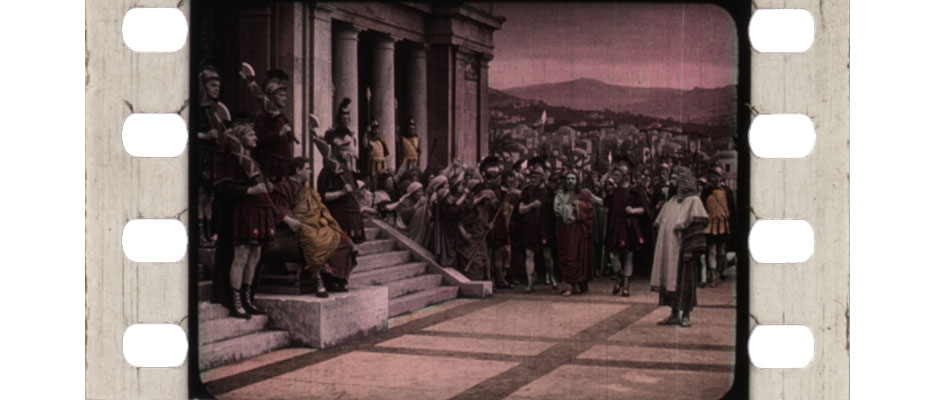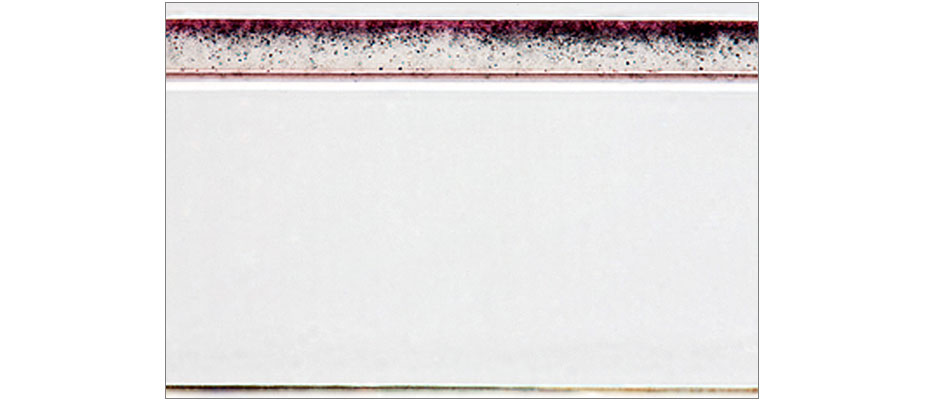


35mm print on cellulose nitrate support.

Dye application may be imprecise.

Dyes penetrate only the upper surface of the gelatin layer.
Process DescriptionFrom the 1890s, aniline dyes were applied to film by hand. Colorists applied the color frame by frame, working with camel hair brushes under a magnifier. Hand-colored prints could be colored overall, or they could be very selective (using only a few colors or coloring only a few elements of each frame). By 1903, the Pathe Company was experimenting with stenciled color prints. A separate stencil was cut for each color to apply a dye precisely and rapidly to specific areas of each frame. Both the production of the stencils and the application of the dyes were first accomplished by hand and mechanized by 1906. Mechanization enabled large-scale and increasingly uniform production of stenciled prints. |
|